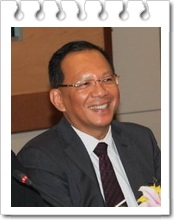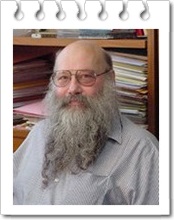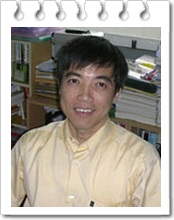| Keynote Speakers |
Keynote Speaker I :
Prof. Dr. Sujate Jantarang
President, Mahanakorn University of Technology
Advisor to the Chairman,
National Broadcasting and Telecommunications Commission (NBTC), Thailand
Title : Satellite Technology for Thailand : Present and Future
Abstract
During the past decade, satellite technology has rapidly improved and developed along with the integrated circuit technologies. The communications and remote sensing are the major areas for satellite applications. |
 |
The high speed communications provide the vital links for variety users and activities such as governmental organisations, state enterprise, commercial firms, public services (Tele-education, Tele-medicine, emergency events) and defense purposes. The high quality images taken by satellite provide the substantial information which is relevant to the disaster management and natural resource planning.
As the demand on the satellite communications and satellite imaging is increasing, the requirement on high performance and high integrity is one of major constrains for space technologies. The use of high advanced technology on those large conventional platforms would cost the huge budget. Furthermore, due to the lack of historical experiences of those new technologies on space operations, this may cause the mission of facing a high risk and end up with the mission failures. In order to demonstrate and test a newly technology, a small platform is one alternative choice to mitigate the risk and meet the cost effective.
Thailand commenced the utilisation of space in 1966 by enrolling as a member of Intelsat for international communications, and later on became a member of Inmarsat for mobile communications. Thailand’s ministry of transportation conceded a satellite project to a private company, called ThaiCom for domestic and international communications. At the present time, there are 5 ThaiCom satellites in the orbit, but only 4 satellites are currently operating.
Thailand first used space imaging taken by satellites for natural resource observations in 1971 by collaborating with NASA in the project of ERTS (Earth Resource Technology Satellite). At the beginning, we only received the satellite image from NASA, but however, later on we received the satellite image from India and France. In 2003, Thailand’s ministry of science and technology purposed the small satellite project, THEOS (Thailand Earth Observation System) by procuring from France. The first launched date was set in 2007, but it was postponed several times. At last, it was launched into space on 1 October 2008. Currently, Thailand aims to have the RADAR system for the second satellite.
The satellite development of Thailand began in 1996, on the TMSAT (Thai Micro Satellite) project which is under the collaboration of Mahanakorn university of technology (MUT), United Communication limited (UCOM) and university of Surrey. TMSAT was the ever first satellite built by Thai engineers. TMSAT was renamed as ThaPhat given by the King. Since the technology transfer on designing, constructing and launching the first microsatellite in 1998, we are currently developing the satellite technology in Thailand to meet the national requirement for remote sensing applications. A cube-sat is a challenge platform to demonstrate the developed new technology and verify the facilities and mission operations. For the cost effective cube-sat program, the engineering model will be completed within one year. The flight model associated flight test verifications will be taken for another two years. The aim of the program is to gain the experience and expertise of young-Thai engineers for the next large-platform technology. Finally, we have collaborated with several organisations for sharing a launch opportunity.
|
Biography
Prof. Dr. Sujate Jantarang received his B.Eng., M.Eng., and D.Eng. degrees in Electronics and Computer Engineering at King Mongkut's Institute of Technology Ladkrabang (KMITL). His research in electronic circuits and systems and key inventions have made significant contributions to the betterment of Thai society. Among his major inventions are a prototype taxi meter nowadays found in Bangkok cabs, THAI-PHAT earth-mapping satellite which is the first original Thai micro-satellite launched by a Russian rocket, and an unmanned aerial vehicle (UAV). Dr. Sujate Jantarang received Thailand's Young Scientist Award in 1994 for his research achievements. |
| Keynote Speaker II :
Prof. Dr. Hisao Shiizuka
President, Japan Society of Kansei Engineering
Title : Theoretical and Practical Aspects on Kansei/Affective Engineering.
Abstract
The term Kansei in Japanese that we use today originates from the aesthesis (an ancient Greek word
meaning sensitivity/senses) used by Aristotle and is thought to have similar meaning to ethos. The German
philosopher Alexander Gottlieb Baumgarten (1714-1762) specified the study of sensible cognition as
“aesthetics” for the first time in the history of philosophy, and this influenced Immanuel Kant. Baumgarten
defined the term “sensible cognition” using the Latin word Aesthetica as in Aesthetica est scientia
cognitionis senstivae [Aesthetics is the study of sensible cognition]. |
 |
|
| He defined “beauty” as a “perfection
of sensible cognition with a coordinated expression” and defined “aesthetics” as “the study of natural
beauty and artistic beauty.” Lucien Paul Victor Febvre (1878-1956) understood Kansei as the French word
sensibilite, which can be traced back to the early fourteenth century. He also maintained that Kansei meant
human sensitivity to ethical impressions such as “truth” and “goodness” in the seventeenth century, and in
the eighteenth century, it referred to emotions such as “sympathy” “sadness,” etc. On the other hand, in
Japan, aesthetica was translated as bigaku [aesthetics]. Read More >>>
Biography
Prof. Dr. Hisao Shiizuka is a Professor of Kansei Engineering, Information Design and Soft Computing at Faculty of Informatics, Kogakuin University since 2006, Tokyo Japan, after having contributed for 11 years as a Professor of Artificial Intelligence System, Linear System Theory and Electric Circuits, to the Department of Computer Science and Communication Engineering at Kogakuin University since 1995, Tokyo Japan. He is engaged in the circuit theory, the graph theory, the Petri net, and the application of the system simulation and the fuzzy theory and the researches on a soft computing and Kansei (sensibility) engineering, etc. Currently, his research interests are Kansei Engineering, Soft Computing, Information Design and Artificial Intelligence. He was a director of Japan Society for Fuzzy Theory in 1995-1997, and was a director of Japan Society of Kansei Engineering in 1999-2001. He is the President of Japan Society of Kansei Engineering, since 2007. |
| Keynote Speaker III :
Prof. Dr. Ir. Erik L. J. Bohez
Asian Institute of Technology, Thailand
Title : Sustainable Science And Technology.
Abstract
When we talk about sustainability it means different thing to different people. There is economic sustainability, social sustainability and environmental sustainability. We can define sustainability as making sure that our future generations have a better quality of life or at least similar to our life now. The best strategies in manufacturing industry, technology, management, information, education, culture and society to obtain sustainability will discussed. |
 |
|
Biography
Educational Background
• Burgerlijk WerktuigKundig Electro-Technisch Ingenieur, 1977-1979, State University of Ghent, Belgium.
• Kandidaat Burgerlijk Ingenieur, 1976-1977, State University of Ghent, Belgium.
• Technisch Ingenieur, Electro-Mechanica, 1972-1976, Higher Technical Institute Saint Antonius Ghent, Belgium.
Research Interests
• CNC/CAD/CAM. Eco-design, Mold&Die Design
• Holonic and Fractal Manufacturing.
• Manufacturing Resources Planning (MRP II).
• Modelling of FMS, Simulation of Metal Removal Processes.
• Robust Control, 5-Axis Machining, Virtual Axis Machine.
• Adaptive Control. Hyper-redundant Robot. Petri Net
| Keynote Speaker IV :
Prof. Dr. Somboon Sangwongwanich
Chulalongkorn University, Thailand
Title : Evolution of Power Electronics Technology: Past-Present-Future Challenges
Abstract
Although its critical roles in our daily work and life are rarely recognized by the general public, Power Electronics is undoubtedly the key technology to convert and control the electrical power in the most efficient manner. Power Electronics Technology is indispensible in today green and environmental movements, and its applications in industry automation, transportation, and electrical power system, have been continually expanded for more than 50 years. |
 |
Along the past history of Power Electronics evolution, many challenging technical issues have been addressed, several innovations have been invented, and many important fundamental engineering concepts have been established. In this lecture, some key technological advancement that has been achieved in various fields related to Power Electronics will be briefly reviewed. Past-present-future challenging issues concerning power device technology, converter technology, motor drive technology, power conditioning technology, and smart grid technology, will be discussed.
Biography
Asst. Prof. Dr. Somboon Sangwongwanich received the B. Eng., M. Eng., and Dr. Eng. degrees in electrical engineering from Nagoya University, Japan, in 1985, 1987, and 1990, respectively. He is currently the Head of Power Division of the Department of Electrical Engineering, Chulalongkorn University, and is also the Head of the Smart Grid and Renewable Energy Group of the department. His research interests include sensorless control of ac machines, PWM converters, active filters, EMI filters, Smart Grid technology, and BEMS. Dr. Sangwongwanich has received several awards from the IEEE, the Institute of Electrical Engineers of Japan, and the Society of Instrument and Control Engineers of Japan, for his research in the field of motor drives.
|
|
|
|